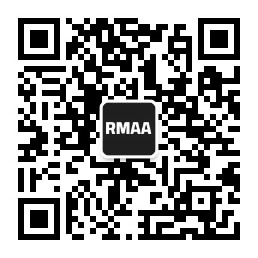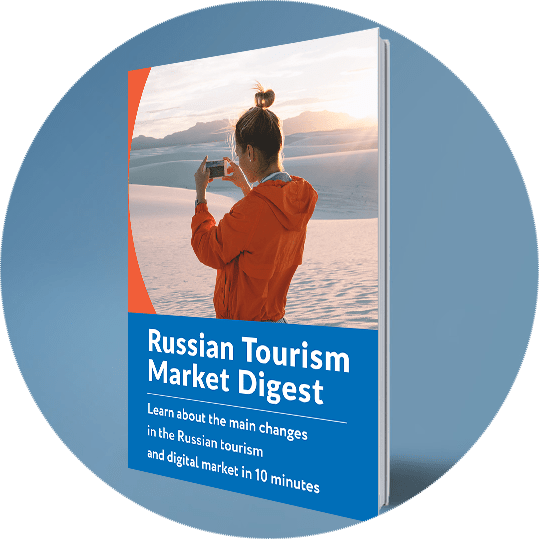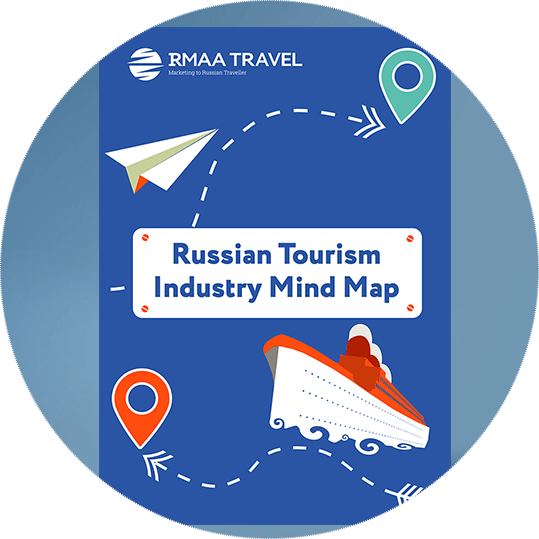Blog about successful marketing strategies in russia
How the Pandemic is Changing Russia's Tourism Industry


B2B MARKETING
Share this Post
Tourism is gradually recovering after a long lull. This is evidenced, firstly, by the development of domestic tourism, which in some countries is very rapid. For example, according to analysts' forecasts, Russian resorts may receive up to 15% more tourists this year due to high demand and extension of the season.
Secondly, partial opening of borders and international traffic. Thus, since August 1, the Russians will be able to fly abroad. However, the list of the countries where they can go is very short. It includes Turkey, Great Britain and Tanzania, which is not popular among Russian tourists.
According to the results of the survey conducted by the business newspaper "Vzglyad", the majority of respondents, which is two-thirds of the respondents, are still not ready to leave the borders of Russia.
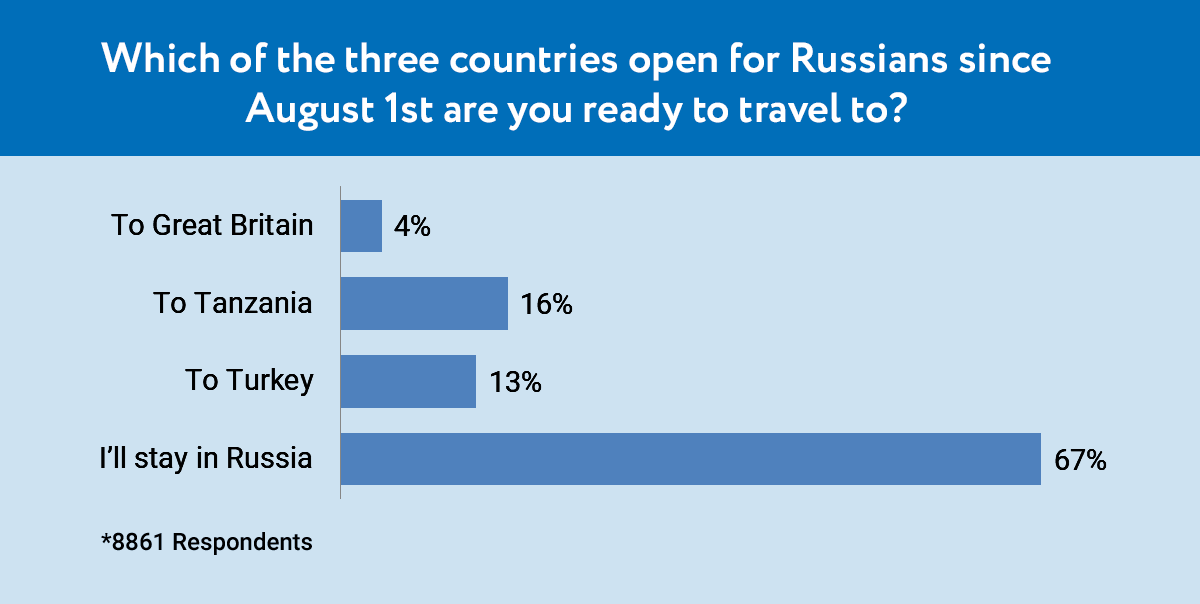
Source: Business Newspaper "Vzglyad"
At the same time, if the situation in Turkey is favorable, they expect to reach the figures of arrivals from the Russian Federation for August-December 2019, at least. Although the forecast of 3 million tourists seems somewhat overstated to a number of Russian experts in the tourism industry.
Three post-COVID behavioral patterns of tourists
Russian tourists in the era of the pandemic recession demonstrate three different behavioral models that should be taken into account by the tourism business when planning work, says ATOR CEO Maya Lomidze. According to the conclusions of the ATOR Analytical Service, new, including unexpected, trends have also emerged in the tourism business.
"Today, our analysts identify three clear behavioral patterns that different groups of Russian tourists follow when planning and purchasing travel and recreation. The percentage is difficult to draw. Our analysts believe it is about 40/40/20%," – said Maya Lomidze.
The first group of tourists wants to break out on any vacation after a period of quarantine restrictions. This can be a budget-friendly trip to the sea or to any available water body, camp site, country hotel, or a trip by own car to the local or nearby region. Security issues for this fairly large group of tourists are not very important – these people, as a rule, do not really believe in the danger of the virus, but the absolute priority for them is an affordable price for recreation.
The second group of tourists pays more attention to the safety of recreation, but also primarily focuses on price: there is low solvency in this client segment. These people will buy a particular tourist product only with a good balance of affordable prices and visible evidence of the safety of their vacation.
"Finally, the third group of today's tourism business customers is not so large, but a well-heeled audience that chooses a safe vacation. Under conditions of border closures, it is the high demand from this segment that has created an amazing situation when luxury accommodation facilities, including villas on the Russian Black Sea, are 100% loaded until the end of September," said ATOR CEO, speaking at the "Round table of industry leaders" event held by Amadeus on July 9.
According to the ATOR Analytical Service, these features of consumer behavior should be taken into account by all market participants when forming their plans and assortment of offers. In addition, analysts note that the pandemic has become a catalyst for significant changes in the tourism industry, and worldwide.
Post-pandemic trends in world tourism
"According to Ipsos analysts, the pandemic has become a factor that can seriously change the attitude to business planning in the industry. In conditions of uncertainty, long-term business planning becomes risky, companies switch to short-term plans, to tactical decisions, as the situation can change at any moment," says Mrs. Lomidze.
"In Russia, historically, business, including tourism, has had a very short planning horizon, since it has always been very difficult to plan for a long time in our market. Sometimes this caused certain difficulties in interaction with foreign companies using long-term planning strategies. Now the situation with the pandemic has put everyone on an equal footing," the expert believes.
The second important trend of world tourism, which is pointed out by Ipsos analysts, is new for the Russian tourist market. We are talking about the high demand for various forms of partnerships, collaborations and cross-marketing campaigns in the tourism business. This trend may also manifest itself in Russia in the post-pandemic period, according to Maya Lomidze.
"Before the pandemic, there were very few examples of effective partner programs in the Russian tourist market. Basically, this partnership concerned charter transportation, which some players with their own airlines "shared" on certain conditions with other tour operators. I am sure that in the situation of uncertainty and limited financial resources after the pandemic, we will see a much greater variety of forms of cooperation and partnership between tour operators, as well as between travel companies and enterprises from related industries," Maya Lomidze emphasizes.
Source: ATOR Bulletin
Travel Research
The Russian Tourism Market Report: Trends, Analysis & Statistics | 2019. How to impress Russian tourists and attract them to your country
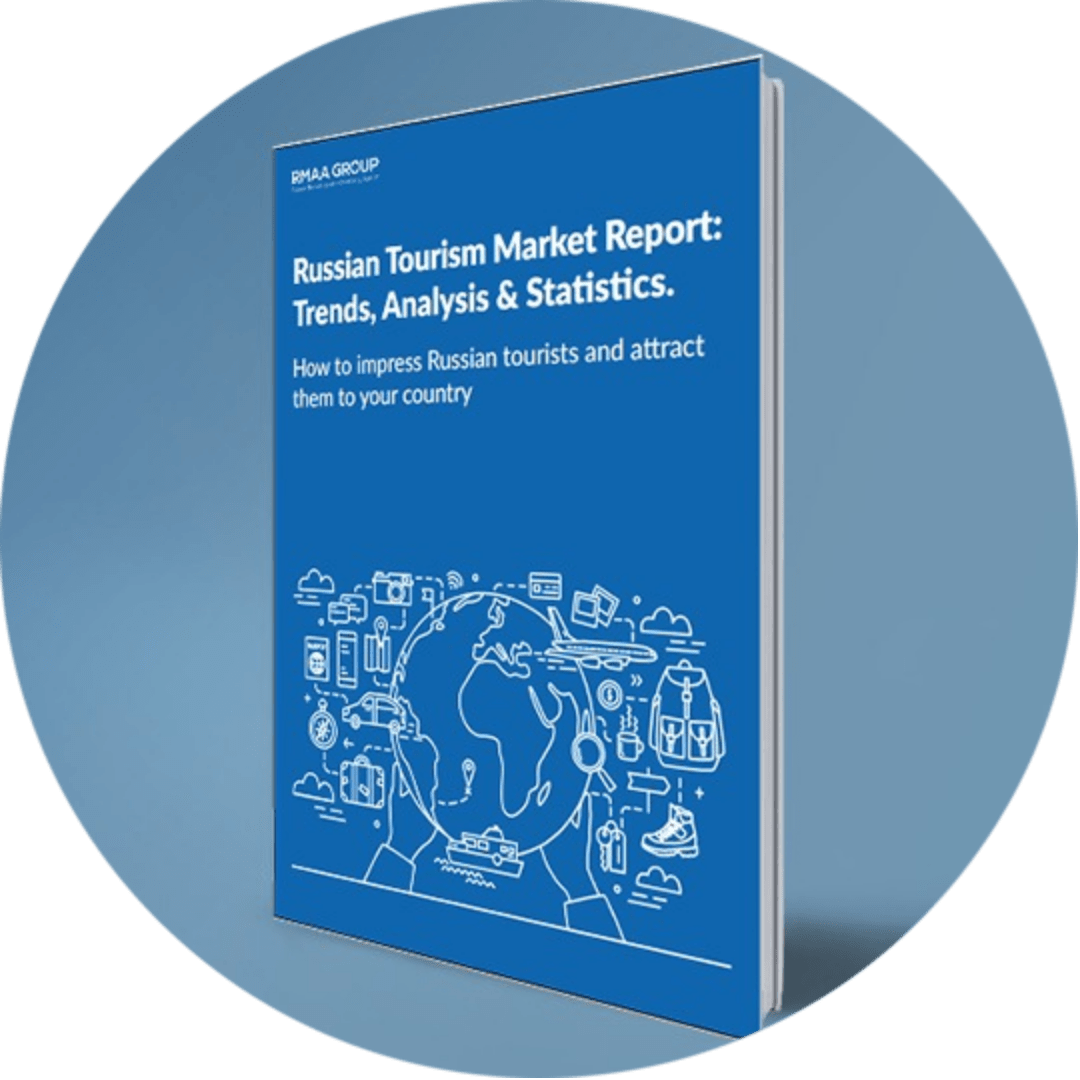
Ready to partner with the specialists in Russian travel marketing and advertising?
About the Author
Head of Digital, editor-in-chief of the RMAA Agency Blog
Join 2,000+ of your Peers!
Get our latest articles delivered to your email inbox and get our exclusive White Paper "How to sell to Russian large companies?" for FREE!
You will be the first to know about Russian marketing insights,
news and updates from our agency.
Stay tuned!
We're updating our website's design step by step, so some pages may look different. Thank you for your understanding.
Got it








